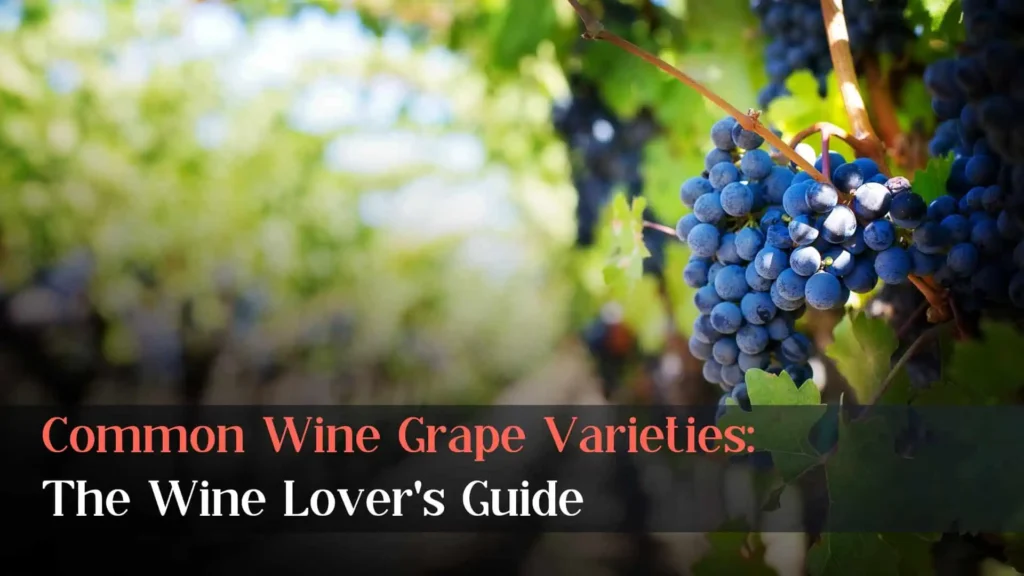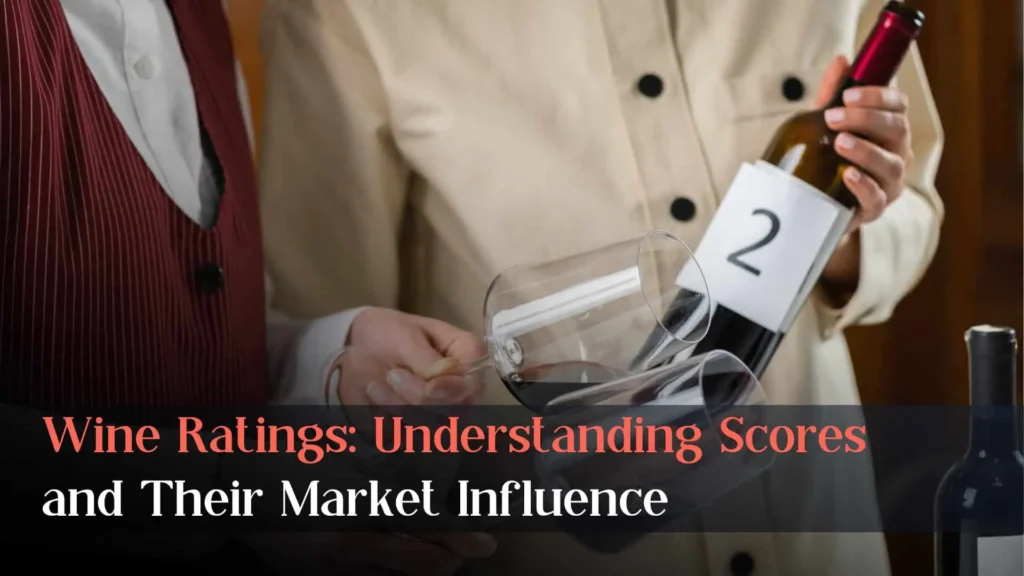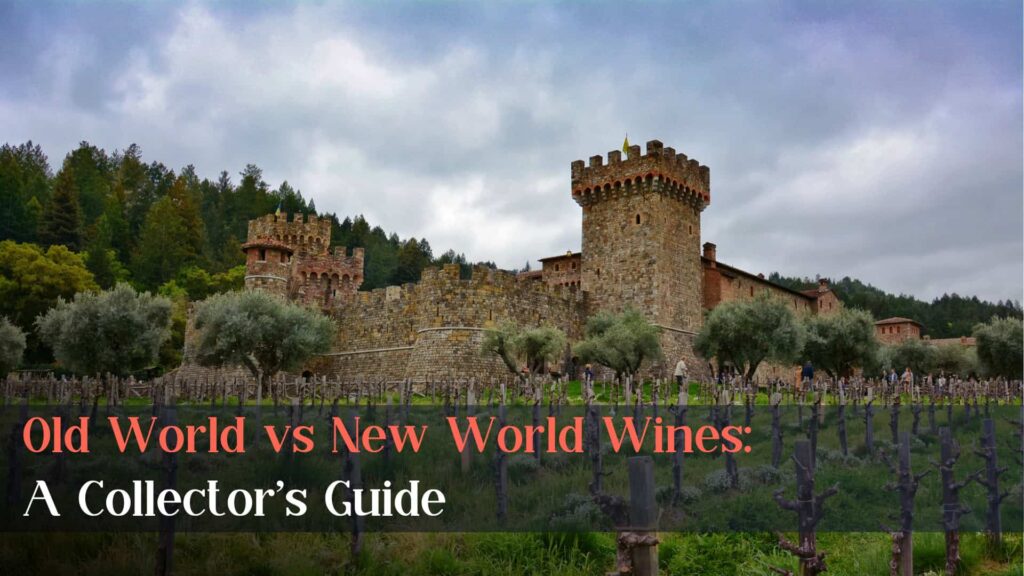The Importance of Wine Provenance: Ensuring Quality from Château to Cellar
In the world of fine wines, provenance carries as much weight as the vintage or terroir. But what exactly is provenance, and why does it matter?
Wine provenance refers to the documented history of a bottle from the winery to your glass. It’s the wine’s journey and a guarantee of its authenticity and quality. For wine lovers, good provenance means that the wine in their glass is exactly what the winemaker intended it to be.
Provenance matters because it ensures that a bottle has been cared for properly throughout its life, free from temperature fluctuations, improper storage, or counterfeit practices. In an industry where bottles can command astronomical prices, provenance isn’t just a luxury—it’s a necessity.
In this article, we’ll explore what provenance means, why it’s crucial, and how you can ensure the provenance of your own wine collection.
Table of Contents
ToggleWhat is Provenance and Why is it Important?
Wine provenance encompasses the entire life cycle of a bottle, from its origin at the winery to its final destination. This documented history includes details about storage conditions, transportation methods, and changes in ownership.
The Impact of Provenance on Wine Quality and Value
Provenance plays a crucial role in the wine world, significantly affecting both the quality and value of a wine. Good provenance ensures that a wine has been stored and handled properly throughout its life, allowing it to age as the winemaker intended. This proper care preserves the wine’s flavors and aromas, which is especially important for wines meant to be aged for long periods.
For collectors and investors, provenance can greatly influence a wine’s market value. Bottles with well-documented histories often fetch higher prices at auctions and in the secondary market. Buyers are willing to pay more for wines they can trust have been well-cared for.
In addition, as wine fraud becomes more sophisticated, provenance serves as a key defense against counterfeits. A clear, traceable history helps ensure that a bottle is authentic, which is particularly important for rare and expensive wines.
In essence, good provenance protects the quality of the wine, enhances its value, and guarantees its authenticity. This makes it an essential consideration for anyone serious about collecting, investing in, or simply enjoying fine wines.
The Concept of Ex-Château
An important aspect of provenance is the concept of “Ex-Château” – wines stored at the winery from bottling until release to the market. Ex-Château provenance is highly valued because it guarantees optimal storage conditions and eliminates questions about the wine’s journey.

Ex-Château wines offer several benefits:
- Perfect storage conditions
- Guaranteed authenticity
- Potential for higher market value
Understanding well-known concepts in the wine industry like Ex-Château, is crucial for anyone serious about collecting, investing in, or simply enjoying fine wines. Read on for more information on what the experts look for in determining a wine’s provenance.
Evaluating Wine Condition and Authenticity: A Specialist’s Guide
When it comes to fine wines, understanding both what to look for and what to avoid is crucial. Wine specialists employ a range of techniques to evaluate a wine’s condition, authenticity, and storage history. Let’s explore the key factors they consider and the red flags that might indicate poor storage or handling.
Documentation and Certification
The first step in evaluating a wine’s provenance is examining its paper trail. Specialists look for purchase records from reputable sources, importation documents for international wines, certificates of authenticity, and auction records. A well-documented wine tells a story of careful handling and legitimate transactions.
However, gaps in documentation don’t necessarily indicate a problem, but they do warrant further investigation. Specialists are on the lookout for missing or incomplete records, inconsistencies in the paper trail, or documentation that appears altered or forged. These can all be red flags that require deeper scrutiny.
Storage Conditions
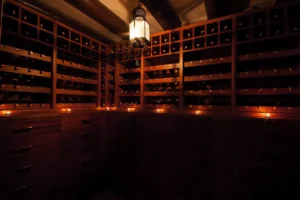
Proper storage is paramount in maintaining a wine’s quality. Specialists typically examine temperature logs, looking for consistent storage between 55°F and 59°F (13°C to 15°C). They also check humidity records, hoping to see levels around 70%, and look for evidence of minimal light exposure and vibration.
Even brief exposures to suboptimal conditions can negatively impact a wine’s quality. Signs of poor storage can be visible on the bottle itself. A sticky residue might indicate exposure to heat, while a dried out, crumbly, or moldy cork suggests improper humidity levels. Unusual color changes in the wine (visible through clear bottles) or evidence of label damage from humidity or pests are also cause for concern. For more on proper wine storage techniques check out our post below:
Related Post: Wine Storage 101: Key Factors for Preservation
Bottle Condition and Appearance
The bottle itself is a window into the wine’s past, with each physical characteristic providing clues about storage and handling. Specialists examine the fill level (ullage), ensuring it’s appropriate for the wine’s age. They assess the cork condition, noting that for older wines, a slightly protruding cork is normal, while sunken corks may indicate poor storage.
The glass quality should be consistent with the purported age and origin of the wine. The presence and nature of sediment are also evaluated, as this can vary depending on the wine’s age and style. Red flags include an unusually low fill level for the wine’s age, signs of leakage or seepage around the cork, excessive sediment in younger wines, or inconsistent wear on the bottle compared to its supposed age.
Label Integrity and Authenticity
The label is a crucial tool in authentication, often examined under magnification or UV light. Specialists assess the paper quality, ensuring it’s consistent with the purported vintage and producer. They look at printing techniques, fonts, and colors, as well as wear and tear, which should align with the stated storage conditions. The presence and correctness of lot numbers or serial numbers are also verified.
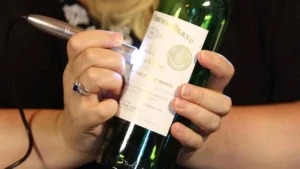
Potential issues can be spotted in misaligned or poorly affixed labels, inconsistent font styles or printing quality, signs of label restoration or tampering, or faded and water-damaged labels inconsistent with the wine’s supposed storage history. Companies like Winefraud.com provide authentication services and training for how to spot these issues.
Sensory Evaluation and Advanced Authentication
When possible, opening a bottle allows specialists to assess the wine’s aroma, taste, and structure, ensuring they match expectations for its variety, region, and age. For exceptionally valuable wines, experts may employ advanced methods like winery record cross-checks or scientific techniques such as carbon dating. The recent discovery of the world’s oldest wine would be one such scenario where these more advanced techniques are used. These comprehensive examinations help build a complete picture of a wine’s provenance and authenticity.
While no single factor definitively proves poor storage or inauthenticity, a combination of concerning indicators should prompt further investigation. In cases of doubt, consulting a trusted wine specialist can provide clarity and peace of mind.
How to Guarantee The Provenance of Your Wine Bottles
Ensuring the provenance of your wine is crucial for maintaining its quality and value. Here are key steps to guarantee the best possible provenance for your bottles:
Purchase from Reputable Sources
- Buy from established wine merchants, directly from wineries, or through trusted auction houses.
- Avoid unauthorized resellers or suspiciously good deals.

Reputable auction houses ensure provenance and authenticity for collectors. [Image Source]
The journey of provenance begins with the purchase. Reputable sources have established relationships with producers and a vested interest in maintaining their reputation. They often have detailed records of a wine’s history and storage conditions. Buying directly from wineries, especially through en primeur or wine futures programs, can provide the best provenance as the wine comes straight from the source. For more on En Primeur and Wine futures check out our related post below:
Related Post: En Primeur: Navigating the World of Wine Futures
Proper Storage
- Maintain consistent temperatures between 55°F and 59°F (13°C to 15°C).
- Keep humidity levels around 70%.
- Store in a dark place with minimal vibration.
- Position bottles horizontally unless they have alternative closures.
Proper storage is the cornerstone of maintaining provenance once the wine is in your possession. Consistent temperature prevents premature aging or damage to the wine. Appropriate humidity keeps corks from drying out, which could lead to oxidation. Darkness prevents light-strike, which can create off-flavors, while minimizing vibration prevents disturbance of sediment and potential chemical reactions. Horizontal storage keeps the cork moist, maintaining its seal. Investing in a quality wine refrigerator or cellar can help ensure these conditions are met.
Meticulous Record-Keeping
- Keep all purchase receipts, certificates, and import documents.
- Maintain logs of storage conditions.
- Take photographs of significant bottles upon receipt.
Documentation is the proof of provenance. Detailed records can significantly enhance the story and value of your wines. Purchase receipts and certificates prove the wine’s origin and authenticity. Logs of storage conditions demonstrate your commitment to proper care. Photographs can provide visual evidence of a bottle’s condition at the time of purchase and help track any changes over time. Consider creating a digital database for easy access and organization of this information.
Professional Services
- Consider regular appraisals for valuable collections.
- Use authentication services for rare or exceptionally valuable wines.
- Obtain professional condition reports for long-term storage.
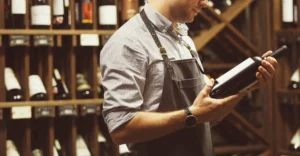
For serious collectors or those with particularly valuable wines, professional services can provide an extra layer of assurance. Regular appraisals not only help track the value of your collection but can also identify any issues with storage or provenance. Authentication services can verify the legitimacy of rare or expensive bottles. Professional condition reports provide an unbiased assessment of a wine’s state, which can be particularly valuable for wines intended for long-term aging or investment.
Careful Transportation
- Use specialized wine shipping services for long-distance moves.
- Ensure temperature-controlled conditions during transit.
- Minimize handling and consider insurance for valuable shipments.
Transportation is a critical and often overlooked aspect of provenance. Even the best-stored wine can be ruined by poor handling during a move. Specialized wine shipping services understand the unique needs of wine transportation and often provide temperature-controlled vehicles and packaging designed to minimize vibration. For valuable shipments, insurance can provide peace of mind. Remember, every time a bottle is moved, there’s a risk to its provenance, so minimize transportation when possible. For more on Wine Transportation and Shipping check out our related post below:
Related Post: Wine Shipping Essentials: Quality, Cost, and Sustainability
Leverage Technology
- Explore blockchain and NFT solutions for digital provenance tracking.
- Consider using smart tags (RFID or NFC) to log temperature data.
- Utilize specialized inventory management software for detailed record-keeping.

Modern technology offers new ways to track and verify provenance. Blockchain and NFTs can create an unalterable digital record of a wine’s history. Smart tags can continuously monitor storage conditions, providing real-time data and alerts if conditions fall outside optimal ranges. Specialized inventory management software can help you keep track of your collection, including purchase information, tasting notes, and optimal drinking windows. While not necessary for every collector, these tools can be particularly useful for large or valuable collections.
Wine provenance is essential in ensuring quality, authenticity, and value. It matters to collectors, investors, and enthusiasts alike.
At GrtWines, we offer wines with documented provenance supported by blockchain technology. Explore our collection to experience the difference that well-tracked provenance makes in fine wines.

